#History Of Northern Nigeria
Text
Comparing Protests: Nigeria vs. UK – Government Responses Under the Microscope
In the past few days, protests have erupted in both Nigeria and the UK as if simultaneously, becoming a pivotal form of expression against perceived injustices and government inadequacies. Presently, Nigeria and the United Kingdom find themselves in the throes of significant civil unrest. Although separated by thousands of miles and differing socio-political dynamics, the responses of both…
#2024#Bola Ahmed Tinubu#democracy#development#Divided kingdoms#Equity#freedom#History#In contemporary Nigeria#injustice#leadership#Ndigbo#Ndigbo; Nigeria; Leadership#Nigeria#Nigerians#Northern Nigeria#Politics#Presidency#Renewal#Thoughtfulness#Tinubu
0 notes
Text
Late 19th Century African Cotton Tunic (riga) Made By Hausa Weavers In Northern Nigeria Inscribed With Illustrations & Koranic Texts
Combining pre-Islamic cultural values with Islamic-inspired patterns that adhere to Islamic religious conventions, Hausa motifs feature animal imagery, such as fish, snakes, and lizards (Heathcote, 1974b). The medium-sized silk motif on the front and back of the gown may take at least four months to complete, as Hausa embroiderers work on commission. Even though men perform the majority of the…
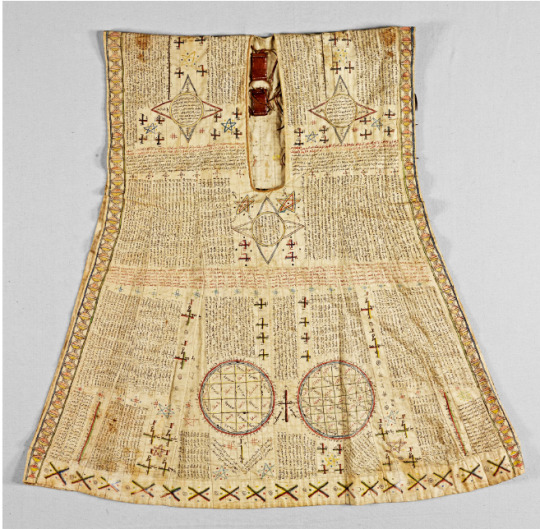
View On WordPress
#19th Century Cotton Tunic#African clothes#African History#Hausa clothes#Hausa history#Hausa Weavers#Late 19th Century Cotton Tunic (riga) Made By Hausa Weavers In Northern Nigeria Inscribed With Illustrations & Koranic Texts#Northern Nigeria#West African#West African history
0 notes
Text
FISHING FESTIVAL IN AFRICA
Argungu Fishing Festival


There are lovely cultures and traditions in Africa
Black Americans should read about their heritage
Welcome to Argungu Fishing Festival
Argungu fishing festival is a way of life for the people of Kebbi State. The festival preserves tradition and promotes conservation. The annual festival takes place in February and marks the end of farming season and start of the fishing season. The festival is a four-day cultural event. It begins with an agricultural show, water sport displays, traditional Kebbawa entertainments and ends with the spectacular fishing competition in the Mata Fadan River.
The History
The Argungu fishing festival began in 1934, marking the end of centuries old hostility between Sokoto Caliphate and Kebbi Kingdom. The festival quickly became a celebration of life and unity.

The River Sacrifice
Before the commencement of the fishing festival, the custodian of the river 'Sarkin Ruwa' ensures the river is safe by performing sacrifices to the river oracle to gain its permission.

Sarkin Ruwa
Like his fathers before him, the Sarkin Ruwa is the official custodian of the Mata Fada River. This responsibility is passed down for generation. Without the consent of the Sarkin Ruwa, no fish can be caught. To ensure the river is safe for fishing, he dispels the crocodiles resident in the river and invites all the fishes in the rivers connected to Mata Fada river.
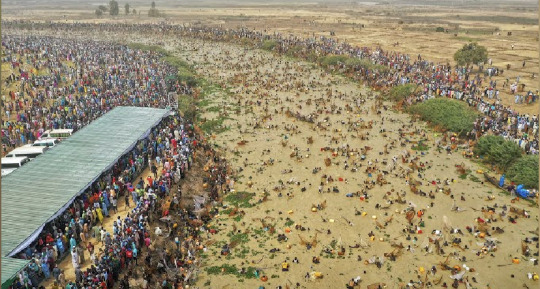
Matan Fada River
The river is a source of pride to the people of Argungu, it serves as a source of food and irrigation for their farm lands. Its about 50 meters wide and about 50 feet deep.
Race To Fish
At the sound of a gun, thousands of fishermen race towards the mata fadan river, leaping into the water to begin their search for the winning freshwater fish
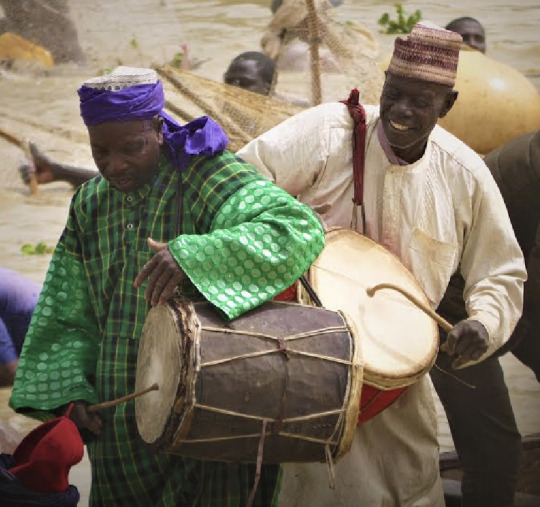
Music and Rhythm
As the fishermen leap into the water, the drummers begin to beat their drums. Filling the air with authentic Kebbawa traditional rhythm. Although women are not allowed to participate in the fishing competition, they are not left out of the drummers group. The drums are traditional Kebbawa drum designs, made of cow skin.
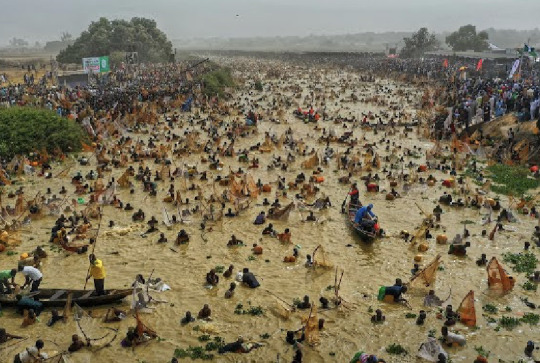
Over 50,000 fishermen from northern Nigeria and surrounding countries participate in the fishing competition annually.
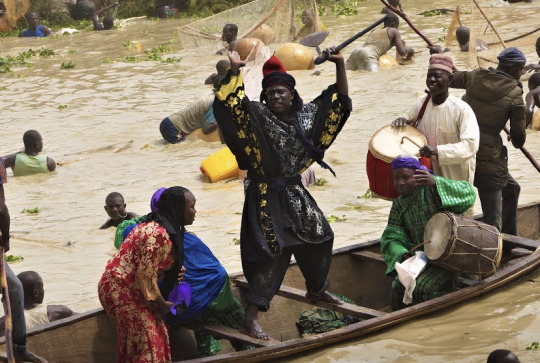
The Sarkin Ruwa and the drummers move to and fro the mata fada river on their canoes, entertaining the fishermen as they search the river for the winning Giwan Ruwa.
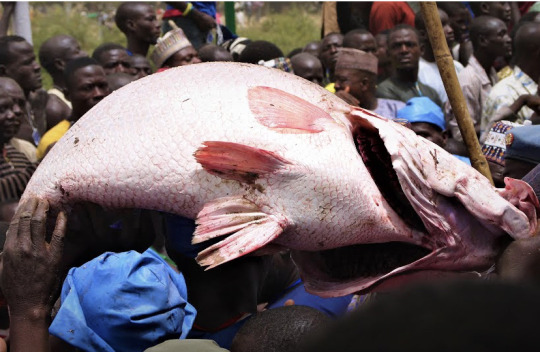
Giwan Ruwa
Giwan Ruwa 'Fish' from the mata fadan river can weigh up to 75 kilograms. The fisherman with the biggest catch wins the fishing competition.
#life#animals#culture#aesthetic#black history#history#blm blacklivesmatter#anime and manga#architecture#black community#traditional illustration#traditional doodle#blacklivesmatter#black heritage
281 notes
·
View notes
Photo
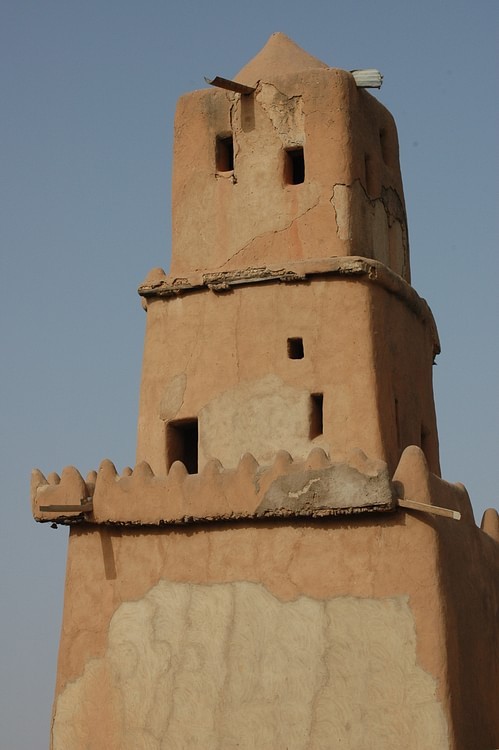
Hausaland
Hausaland, sometimes referred to as the Hausa Kingdoms, was a group of small independent city-states in northern central Africa between the Niger River and Lake Chad which flourished from the 15th to 18th century CE. The origins of the Hausa are not known, but one hypothesis suggests they were a group of indigenous peoples joined by a common language - Hausa - while another theory explains their presence as a consequence of a migration of peoples from the southern Sahara Desert. The cities prospered thanks to local and interregional trade in such commodities as salt, precious metals, leather goods, and slaves. Islam was adopted by many of the rulers and elite of the city-states in the 14th and 15th century CE but was also one of the reasons for their loss of independence when the Muslim Fulani leader Usman dan Fodio (r. 1803-1815 CE) launched a holy war and conquered the region in the early 19th century CE.
Geography & Origins
The name Hausaland derives from the Hausa term Kasar hausa, meaning the 'country of the Hausa language', although the area also included other peoples such as the Tuareg, Fulbe, and Zabarma. The term 'Hausa' was in use only from the 16th century CE as the people called themselves according to which specific city-state or kingdom they belonged to.
Hausaland was located in the Sahel region between the Niger River and Lake Chad in north-central Africa in what is today northern Nigeria. The Sahel is the semi-arid strip of land running across Africa between the Sahara Desert in the north and the Savannah grassland to the south. Hausland, specifically, stretched from the Air mountains (north) to the Jos plateau (south) and from Borno (east) to the Niger Valley (west). This region saw the development of towns by the Hausa-speaking people from 1000 to 1300 CE.
The exact origins of the Hausa cities are not known, but theories include a migration of peoples from the southern Sahara who, abandoning their own lands following the increased desiccation of that area, established new settlements in what would become known as Hausaland. An alternative theory suggests that the Hausa people originally lived on the western shore of Lake Chad and when the lake shrank (as a consequence of the same climatic changes that affected the Sahara) they occupied this new and fertile land and then eventually spread to the immediate north and west. There is as yet, unfortunately, no archaeological evidence to support either of these two theories. As a consequence, there is a third hypothesis, which is that the Hausa had not migrated from anywhere but were indigenous to the region. Support for this theory lies in the fact that there is no tradition of migration in Hausa oral history.
There is, though, a foundation legend, known as the Bayajida or Daura legend, although this probably dates to the 16th century CE and reflects the increased influence of Islam in the region at that time. According to this tradition, Bayajida, a prince from Baghdad, arrived at the court of the ruler of the Kingdom of Kanem (or the Bornu Empire as it became by the 16th century CE). Receiving an unfavourable reception, Bayajida headed eastwards until he came upon the city of Daura. There, the queen and her kingdom were being terrorized by a great snake. Bayajida stepped in and killed the troublesome serpent and promptly married the queen. Together they had a son called Bawogari who then went on to have six sons of his own, each of which became the king of a Hausa city-state. Meanwhile, Bayajida had another son, this time with one of his concubines. This illegitimate son, called Karbogari, had seven sons, and these went on to rule seven other Hausa cities. This story neatly explains how the various cities were established but not, of course, just where Daura and its queen came from.
Continue reading...
25 notes
·
View notes
Text

CULTURE SUMMARY: IGBO
By IFI AMADIUME
ETHNONYMS
Ala Igbo, Ani Igbo, Ibo, Ndi Igbo.
IDENTIFICATION AND LOCATION
Igbo is the language spoken in Ala Igbo or Ani Igbo (Igboland) by the people who are collectively referred to as “Ndi Igbo”; their community is known as “Olu no Igbo” (“those in the lowlands and uplands”). Before European colonialism, the Igbo-speaking peoples, who shared similarities in culture, lived in localized communities and were not unified under a single cultural identity or political framework, although unifying processes were present via expansion, ritual subordination, intermarriage, trade, cultural exchange, migration, war, and conquest. Villages and village groups were generally identified by distinct names of their ancestral founders or by specific names such as Umuleri, Nri, Ogidi, Nnobi, Orlu, Ngwa, Ezza, and Ohaffia.
There are several theories concerning the etymology of the word “Igbo” (wrongly spelled “Ibo” by British colonialists). Eighteenth-century texts had the word as “Heebo” or “Eboe,” which was thought to be a corruption of “Hebrew.” “Igbo” is commonly presumed to mean “the people.” The root - bo is judged to be of Sudanic origin; some scholars think that the word is derived from the verb gboo and therefore has connotations of “to protect,” “to shelter,” or “to prevent”—hence the notion of a protected people or a community of peace. According to other theorists, it may also be traced to the Igala, among whom onigbo is the word for “slave,” oni meaning “people.”
Igbo-speaking peoples can be divided into five geographically based subcultures: northern Igbo, southern Igbo, western Igbo, eastern Igbo, and northeastern Igbo. Each of these five can be further divided into subgroups based on specific locations and names. The northern or Onitsha Igbo are divided into the Nri-Awka of Onitsha and Awka; the Enugu of Nsukka, Udi, Awgu, and Okigwe; and those of the Onitsha town. The southern or Owerri Igbo are divided into the Isu-Ama of Okigwe, Orlu, and Owerri; the Oratta-Ikwerri of Owerri and Ahoada; the Ohuhu-Ngwa of Aba and Bende; and the Isu-Item of Bende and Okigwe. The western Igbo (Ndi Anioma, as they like to call themselves) are divided into the northern Ika of Ogwashi Uku and Agbor; the southern Ika or Kwale of Kwale; and the Riverrain of Ogwashi Uku, Onitsha, Owerri, and Ahoada. The eastern or Cross River Igbo are divided into the Ada (or Edda) of Afikpo, the Abam-Ohaffia of Bende and Okigwe, and the Aro of Aro. The northeastern Igbo include the Ogu Uku of Abakaliki and Afikpo.

Today Igbo-speaking individuals live all over Nigeria and in diverse countries of the world. As a people, however, the Igbo are located on both sides of the River Niger and occupy most of southeastern Nigeria. The area, measuring over 41,000 square kilometers, includes the old provinces of Onitsha, Owerri, East Rivers, Southeast Benin, West Ogoja, and Northeast Warri. In contemporary Nigerian history, the Igbo have claimed all these areas as the protectorate of the “Niger Districts.” Thus began the process of wider unification and incorporation into wider political and administrative units. Presently, they constitute the entire Enugu State, Anambra State, Abia State, Imo State, and the Ahoada area of Rivers State; Igbo-speaking people west of the Niger are inhabitants of the Asaba, Ika, and Agbo areas of Delta State.

#african#afrakan#kemetic dreams#africans#brownskin#brown skin#afrakans#african culture#igbos#Ndi Igbo#Ani Igbo#Ala Igbo#Umuleri#Nri#Ogidi#Nnobi#Orlu#Ezza#Ohaffia#nigerian#niger#niger delta
34 notes
·
View notes
Text
PSA: Islam is NOT a benevolent ideology. Rather, Islam IS a colonial, imperialist, intolerant, subjugating, violent, murdering, and oppressive ideology. But most especially, Islam was the greatest slave taking, slave trading, and slave raping entity ever known to mankind. More than the Roman (and other European) Empires. Slavery has been a "given" from its inception, and has been a large part of its wealth and expansion since Muhammad arrived to Yathrib (now Medina), throughout its 1,414 year history, and even continues to this very day.
The sheer quantity of slaves kidnapped out of Africa, is a big differentiator. While all empires depended on slaves to one degree or another, Islam began kidnapping slaves out of Africa CENTURIES BEFORE the European slave trade began, and lasted much longer. Not for nothing, but, a big part of Islamic slavery of Africans (and Jews and others) is a sexual component, where women were kidnapped to be sexual slaves to the militant men. The women were kidnapped in order to service the sexual whims of Islamic men, and also to breed more Muslims. We've seen this in recent years as thousands of young female Africans have been kidnapped by Boko Haram, Al Shabad, and ISIS (to name a few) from Nigeria, Sudan, and Northern Iraq (ie, Yazidi girls and women).
Why do we not learn in history courses, that Islam is the greatest slave empire of all time, dramatically eclipsing any of the others?

It's estimated that Islamic jihadi armies took over 100 million slaves out of Africa, and marched them by foot, into the Middle East. It is also estimated that more than 10% of the kidnapped Africans, died on the way, from starvation, exhaustion, dehydration, and physical abuse. The number of dead slaves is more than the number of Jews killed in the Holocaust. This makes Islam a bigger killer than the Nazis.
Islam, which claims to be the "last religion" and the "Religion of Peace" is not just one of the most violent and oppressive empires on the planet, it has not only taken more land and occupies vast swaths of Arabia, Africa, and Southeast Asia (and now encompasses 56 countries), but it has also been one the largest slave traders.
In fact, slave trading in Islam still exists today.
Not only that, the world in Arabic "abeed" is an interchangeable word for slave and a slur for black people.
Far from being an ethical religion, Islam is imbued with brutality and disregard towards all men and women, not to mention, in practice, racism against blacks and all non-Muslims.
#abid#abeed#slaves#slave trading#Islamic slave trade#israel#secular-jew#jewish#judaism#israeli#jerusalem#diaspora#secular jew#secularjew#islam#Jew hatred#African slavery#Islamic slavery#colonialism#colonial#imperialism#occupation#Islamic occupation#Hamas#Isis#al qaeda#arab slave trade
41 notes
·
View notes
Note
may I ask what you're researching? I'm very intrigued now!
i'm researching the history of textile manufacturing and trade in kano (a city in northern nigeria, one of the original hausa kingdoms) during the sultanate of kano and fulani rule under the sokoto caliphate from the late 1700s to about the 1880s, just before the british conquered the region. kano was a centre of trade on the trans-saharan routes for centuries and 'the' centre of cloth production in west africa for a very long time, with the majority of the city devoted to extensive cotton production, spinning, dyeing, and weaving (as well as leatherworking, agriculture, and the slave trade, among others). cloth from kano was traded across africa and into europe, west asia, india, and onward.
because of my background in weaving and craft, i'm not only studying the history of the trade and production but the actual production itself; as in, i am trying to figure out exactly how they processed the cotton, dyed it, wove it, what equipment and techniques were used in this process, etc. and understand how these relate to the economic and cultural history of the region <3
if you're interested in my bibliography so far i uploaded the list for viewing here (and if you want any of the documents and don't have access to them via jstor or whatever send me a private mssg and i can send them to you)
#i actually have more readings i havent added to the list yet but im lazy rn ill update it later#a couple of the works cited are physical books so i cant send pdfs of them but most are just pdfs lol
67 notes
·
View notes
Text
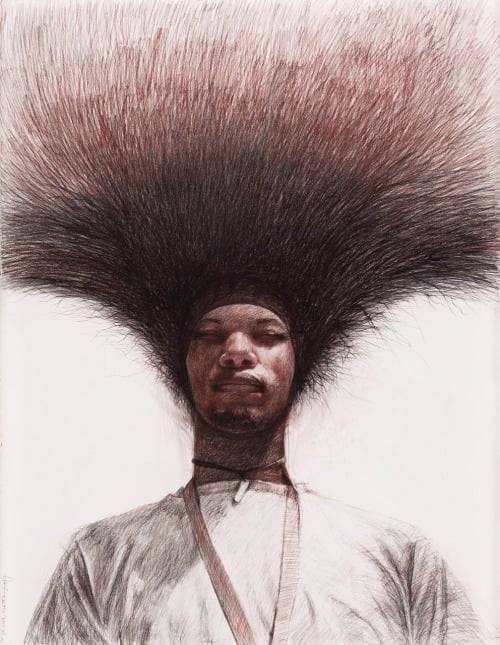
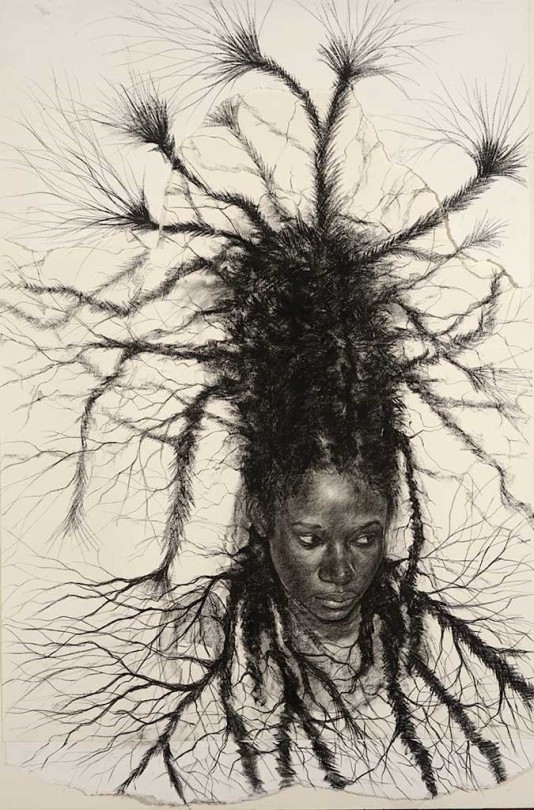
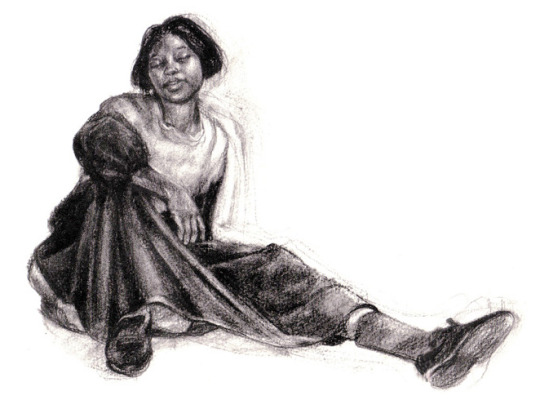
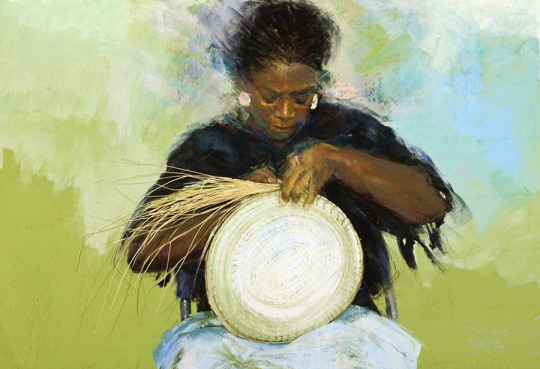


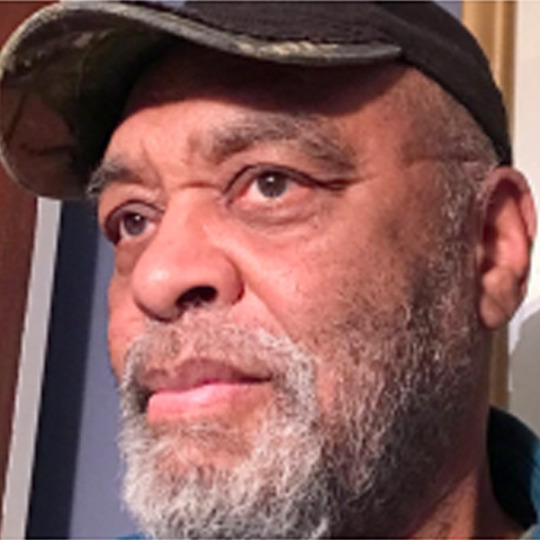
TYRONE GETER b 1945, USA)
In a career that spreads across two continents, Tyrone Geter has built an international reputation as a world-class artist, painter, sculptor, illustrator and teacher. Presently an Associate Professor of Art at Benedict College in Columbia, SC, Geter grew up in Anniston, Alabama, a site of numerous acts of racial violence during the Civil Rights Era which informs and shapes his work.
Geter received his Master of Fine Arts from Ohio University in 1978. An exceptional draftsman, his portraits are sensitive, timeless and masterfully executed. Their power, displayed through their expression, gesture and adornments, seem often suspended in an other-worldly environment. Equal to the history his figures embody, they also speak of a spiritual world overflowing with compassions and empathy. In this regard his work is uniquely distinctive.
In 1979, Tyrone Geter relocated to Zaria, Nigeria, a move that proved to be a turning point in his development and growth as an artist. For seven years he lived, drew and painted among the Fulani and local peoples of Northern Nigeria.
He returned to the United States in 1987 with a teaching position at the University of Akron. He is the recent recipient of the Yaddo Residency in Saratoga Springs, NY.
29 notes
·
View notes
Text
In the past two years Glasgow has become the first UK museum to repatriate objects to India. Newcastle and the Horniman in south London followed an example set by Aberdeen and Cambridge by returning looted Benin bronzes to Nigeria. Exeter handed sacred regalia to the Siksika Nation in Canada. Oxford returned the remains of 18 indigenous people to Australia.
Earlier this month Manchester completed a landmark return of 174 objects to the to the Anindilyakwa community, who live on an archipelago in the Gulf of Carpentaria, off the northern coast of Australia.
The scale of repatriation – or rematriation as it was proudly labelled by a Scottish national museum returning a totem pole to Canada – is unprecedented but missing from all this, campaigners say, are the nation’s London-based national museums who look increasingly isolated.
“Regional museums are so far ahead of national institutions,” said Lewis McNaught, who runs the not-for-profit Returning Heritage project.
“It has been led by Glasgow and it really just remains for national collections to wake up to the trend which is, actually, now global. The UK is really falling behind quite dramatically.”
Dan Hicks, a professor of contemporary archaeology at Oxford University as well as curator at the city’s Pitt Rivers Museum, said repatriation has become part of the “fake culture wars” with some on the right seeing it as “wokery”.
“What that means, sadly, for our national institutions is that they are being forced into a position of inertia and making themselves increasingly irrelevant with every week that goes by and every restitution that we see from the regions and elsewhere around the world.
“Everyone else is getting on with it.”
The big reasons for the two different narratives is that the London-based national museums are hamstrung by legislation.
The British Museum Act 1963 specifically forbids the museum from disposing of its holdings. The National Heritage Act of 1983 prevents trustees of institutions, including the V&A, Science Museum and others, from deaccessioning objects unless they are duplicates or beyond repair.
Regional museums, whether they are run by local authorities, universities or are regimental museums or private, don’t have the same issue.
But the picture is more complicated, said Hicks, and repatriation is also not a new issue or debate.
“There is a deep and long history to restitution in this country. Edinburgh university was returning human remains two generations ago, never mind one generation … there are scores if not hundreds of stories over the past 40 to 50 years.
“It should be part of what museums do. It’s a part of the job.”
Glasgow is seen as a leader in the repatriation conversation since an agreement in 1998 to return a Sioux warrior shirt acquired at the end of the 19th century from Buffalo Bill’s Wild West Show.
The return of the Lakota Sacred Ghost Dance Shirt to the Wounded Knee Survivors’ Association established criteria that have been widely adopted in the museum sector.
Duncan Dornan, the head of museums and collections at Glasgow Life, said repatriation should be seen as a two way process and recalled the joy at the signing ceremony last year for the repatriation of artefacts to India.
“It was a very emotional event and Glaswegians of Indian heritage were very emotional. Their response was that they were very proud of their city.
“We see repatriation as establishing a relationship of equals and emphasising Glasgow as an outward-looking modern city.
“This is about a 21st-century relationship rather than a historic relationship.”
The recent Manchester Museum return of objects was seen as important because they were not giving back things that had been looted. They were everyday objects, including dolls made from shells, baskets and boomerangs.
“We believe this is the future of museums,” said Esme Ward, the director of Manchester Museum. “This is how we should be.”
Unesco hopes that Manchester will be a model for other museums to follow. Krista Pikkat, Unesco’s director for culture and emergencies, said: “It is a truly historic and moving moment. This is a case we have shared with our member states because we felt it was exemplary in many ways.”
The UK government has no plans to change the law that could then lead to movement in some of the most high-profile repatriation debates such as the Parthenon marbles and the Benin bronzes.
Campaigners say the UK is looking increasingly isolated and there is a growing movement for a change in the law.
Lord Vaizey, a former long-serving Conservative arts minister, has said the 1983 act “makes it almost impossible for UK museums to establish themselves as outward-looking, modern institutions fit for purpose in the 21st century”.
There are ways of getting around it. The V&A announced last year that it was returning the Head of Eros, a life-sized marble carving dating back to the 3rd century AD, to Turkey to be reattached to the famous Sidamara sarcophagus.
It made good a promise made by the British government in 1934 but the return is essentially a long-term loan, not an unconditional return.
Across the world, from the US to France to Germany and the Vatican, countries are repatriating objects. “Almost everywhere you look, items are being returned,” said McNaught.
In July, for example, the Netherlands repatriated nearly 500 looted objects to Sri Lanka and Indonesia.
The objects going to Sri Lanka include the famous and fabulous ruby-inlaid Cannon of Kandy dating from 1745, one of six objects from the Rijkmuseum that represented the very first return of colonial items from the museum’s collection.
The Vatican has also voiced willingness to return indigenous artefacts. “The seventh commandment comes to mind: If you steal something you have to give it back,” Pope Francis said in April.
The London-based national museums are undoubtedly hamstrung by law but that does not stop the regular calls for the return of objects.
Some cases are indisputable, say campaigners.
McNaught pointed to Ethiopian tabots that have been in the British Museum’s stores for more than 150 years.
The wood and stone tabots are altar tablets, considered by the Ethiopian Orthodox Church as the dwelling place of God on Earth and the representation of the Ark of the Covenant.
“They have never been exhibited and they never will,” said McNaught. “They have never been studied. They have never been photographed. The only people who can release these items are trustees and they can’t see them either.
“So if you are a trustee and you say, ‘Let me see what all the fuss is about,’ then you can’t.”
21 notes
·
View notes
Text
By: Jack Rivington
Published: Sep 29, 2023
Ahead of International Blasphemy Rights Day, Jack Rivington says freedom of religion or belief must include the freedom to criticise or dissent from religious orthodoxy.
The freedom to question and criticise religious ideas in the same manner as any other kind is foundational to a democratic society. Where it exists at all, this freedom is constantly threatened, both by its traditional enemies of theocracy and religious fundamentalism, but also increasingly from a misguided interpretation of liberal values.
A recent report from the United States Commission on International Religious Freedom identified 95 countries which criminalise blasphemy in some way. That number is at least one too few, as it fails to include the United Kingdom, where the offences of blasphemy and blasphemous libel remain on the books in Northern Ireland.
Punishments in countries which outlaw blasphemy vary, from fines to imprisonment and execution. Unjust though such legal processes are, the extra-judicial violence licenced and encouraged by such laws is of equal importance. The Center for Inquiry, which established September 30th as International Blasphemy Rights Day, has said to "charge someone with blasphemy is to value a person's life less than an idea". Though this is particularly true in countries such as Nigeria and Pakistan, where those accused of blasphemy are often murdered, it is also the case worldwide. Last year, Sir Salman Rushdie was attacked in Chautauqua, New York, 34 years after the Ayatollah Khomenei called for his murder for the supposed offence of blasphemy.
Those who would impose and enforce blasphemy codes on others do not respect or recognise national borders or sovereignty. A commitment to free speech must therefore be equally international in its scope. In failing to fully abolish its blasphemy laws, the UK validates the notion that perceived offence to religion or God should be prohibited, thereby undermining its ability to promote the right to freedom of expression elsewhere.
Attempts to shield religion from criticism are also underway via systematic efforts to characterise such criticism as a form of racial or ethnic bigotry. The concept of 'Islamophobia', vigorously promoted by Islamists both in the UK and abroad, is the most pressing example. Integral to the concept is the claim that criticism of ideas is equivalent to attacking individuals. Under the term's definition formulated by the All Party Parliamentary Group on British Muslims (APPG), to question Islamic ideology is to effectively express hate for Muslims.
This is a blasphemy law in another form – a point demonstrated by the case of Erika López Prater, who was fired last year by Hamline University after discussing artistic representations of Muhammad in an art history class. A Muslim student complained that as images of Muhammad are banned in Islam, the content of the lesson – and by extension Prater – was thus blasphemous and Islamophobic.
By agreeing that images of Muhammad are Islamophobic and should therefore not be shown, Hamline generalised the personal feelings and religious interpretation of one individual as the definitive position of Islam. But this view is not shared by all Muslims. As Anna Khalid - an associate professor of history at Carleton College and herself a Muslim - pointed out, in endorsing the supposed Islamic ban on images of Muhammad, Hamline "privileged a most extreme and conservative" point of view.
A policy which empowers the most fundamentalist elements within a religious community is neither liberal nor inclusive. Yet that is precisely what the current arguments around 'hate speech' have achieved. What we have, in effect, is a code which polices a particular theological interpretation of Islam against other interpretations. It is a gross perversion of laws intended to protect the right to freedom of religion or belief to enlist them in sectarian theological disputes in this way.
If the right to freedom of religion or belief means anything, it must include the right of those within religious groups considered blasphemous by more doctrinaire views to practice their faith as they see fit. The current understanding of 'Islamophobia' threatens those who perceived not to conform to traditional theology – Muslim women who reject the hijab, openly LGBT Muslims, and minorities within the religion such as Ahmadis, for example. It is absurd to think that a gay Muslim could be labelled 'Islamophobic' for criticising elements of their own faith which are homophobic. Yet under the current conceptual framework, such criticism could be labelled as such. The ability to criticise religion must therefore be seen as an essential component of the right to freedom of religion or belief, not in conflict with it.
However well-intentioned, politicians who endorse the concept of 'Islamophobia' are effectively reintroducing blasphemy laws by the backdoor and empowering fundamentalists within religious communities in the process. Concerningly, a significant part of the UK's political establishment appears unaware of the problem – the APPG definition has been accepted by all major parties except the Conservatives, along with one in seven UK local authorities.
The UK must not sacrifice the right to free speech in a misguided attempt to promote social cohesion. Secularism, and a robust defence of the ability to criticise all ideas and ideology, is the only genuine way to achieve an properly inclusive society which respects everyone's right to freedom of religion or belief. In defending that right, we must remain vigilant.
#Jack Rivington#blasphemy#blasphemy laws#cancel culture#International Blasphemy Day#Blasphemy Day#National Secular Society#religion#religious sentiments#hurting religious sentiments#religion is a mental illness
20 notes
·
View notes
Note
I just spent half a day arguing with someone who claims aph Spain is practically Arab because of Al Andaluz and I can't with people
That person didn't know any basic history. If Spain is Arab because of Al Andalus, India must be an exact copy of Britain and the quintessential Anglo Saxon society. And at least they do speak English, lol.
That person probably fed on all the Orientalist propaganda and ridiculous stereotypes about Spain. But the influence Arab culture had in Spain is minimal and superficial. Sure, there's some Arab influence, but it is pretty superficial and non transcendental to Spanish culture, society, or identity. Its biggest contribution to Spain was it acting as its adversary, hence reinforcing the Roman and Christian identity of Spain's population. They should just ask themselves what language do Spaniards speak and what is the predominant religion in Spain.
Also, just ask the person if they think Arabs are responsible for mass genocide in Spain and killed all native inhabitants so everyone in Spain is Arab now.
Tbh, I'm sure they don't even distinguish between Arab and North African/Berber culture, nor are aware of the process of Reconquista, let alone know the difference between Emirate and Caliphate, or the existence of the Taifa kingdoms.
Anyone who thinks Spain is an Arab country, or even somewhat Arab, because of Al Andalus, is either an ignorant/delusional fool, or a troll, or maybe both.
As for aph Spain, I would think nation personifications represent the people living in those regions. Since people living in Spain today are not Arab, not even remotely so, and are descendants of the Northern Christian people who repopulated the south + buckets of Christian people who lived in the south under Muslim rule but who never converted and were later assimilated again within a Christian, Greco-Roman, and Medieval European context and culture, I see absolute no reason to make aph Spain Arab, nor anything remotely similar. That would make as much sense as creating an OC of the Mexica (Aztec) empire and making him/her Spanish, or making India a Saxon warrior, or Nigeria a Viking sailor (actually, maybe even less sense, if that's even possible).
#and don't fight me on this#aph spain#antonio fernandez carriedo#tbh#i got the feeling some people do it out of ignorance#and I may have been too rough in this post#and their assumptions are nto coming from a bad place at all#but it is annoying#think whatever you want#but it does get irritating at times#more so when you are talking to them and they insist over and over on the topic#again#there IS sone Arab influence in Spanish culture#just like today there's a whole ton of American (USA) influence in pop culture all over the world#but this is superficial and non-trancendental in terms of identity society or overall culture of a nation#if Spain is practically Arab because of the little influence Al-Ándalus had in Spanish culture#then we may very well say Spain is France's clone for there's no other country that has influenced Spain as much as France has#italy coming a close second#however saying aph Spain or Spain is practically French or Italian because if their influence in our culture and politics would be nuts#history#kind of
21 notes
·
View notes
Text
NIGERIA’S RESTRUCTURING: HOPE FOR NATIONAL PROGRESS
Recently there’s been a resurgence of opinions, comments and calls by both individuals and groups for the Nation to be restructured. And on the 10th of January 2024,on Arise TV, The President-General of Ohanaeze Ndigbo Worldwide, Chief Emmanuel Iwuanyanwu, alluded to this also and stated that that is what Ndigbo calls for.
In this commentary, I have tried to put in simple terms what this renewed…

View On WordPress
#2024#Bola Ahmed Tinubu#Conference#democracy#Equity#freedom#growth#History#igbo#Igboland#In contemporary Nigeria#injustice#makandiuta#Ndigbo#Ndigbo Lagos#Ndigbo; Nigeria; Leadership#Nigeria#Northern Nigeria#Ohanaeze#Presidency#Random Thoughts
0 notes
Text
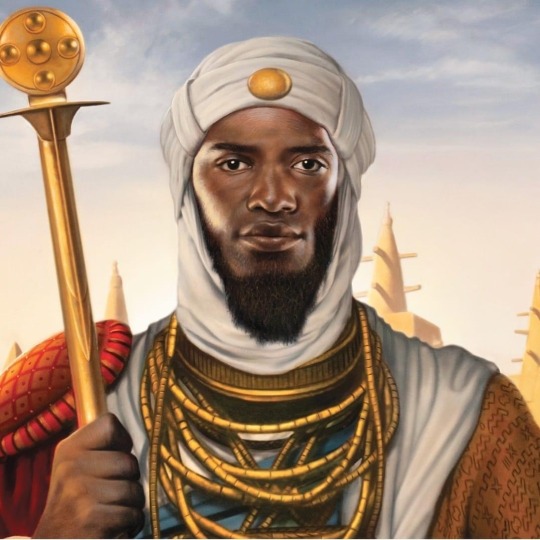
White people ask, why has there never been a powerful African nation like Rome, Persia, or the Aztecs?
Wait, seriously? “Never been a powerful African nation," says who exactly?
I’d presume you’ve never heard of some of these before:
ZULU KINGDOM. They crushed the British in their first battle and wrecked havoc on the Boers.The Zulu Kingdom, sometimes referred to as the Zulu Empire or the Kingdom of Zululand, was a monarchy in Southern Africa that extended along the coast of the Indian Ocean from the Tugela River in the south to Pongola River in the north.
MALIAN EMPIRE. Home to one of the richest Kings in human history. The Mali Empire was an empire in West Africa from c. 1226 to 1670. The empire was founded by Sundiata Keita and became renowned for the wealth of its rulers, especially Mansa Musa. The Manding languages were spoken in the empire.
KINGDOM OF AXUM. One of the centers of African civilization centuries before any European civilization. The Kingdom of Aksum, also known as the Kingdom of Axum or the Aksumite Empire, was a kingdom centered in Northeast Africa and South Arabia from Classical antiquity to the Middle Ages.
ANCIENT EGYPT. One of the centers of civilization. The civilization of ancient Egypt began in the Nile River valley of northeastern Africa. Ancient Egypt was one of the world's first civilizations. It is also one of the most famous civilizations in history.
KINGDOM OF KUSH. Which has more pyramids than Egypt by the way. The Kingdom of Kush was an ancient kingdom in Nubia, centered along the Nile Valley in what is now northern Sudan and southern Egypt. The region of Nubia was an early cradle of civilization, producing several complex societies that engaged in trade and industry.
THE KINGDOM OF DAHOMEY - This was a West African kingdom located within present-day Benin that existed from approximately 1600 until 1904.
THE KINGDOM OF BENIN - Also known as the Edo Kingdom, or the Benin Empire was a kingdom within what is now southern Nigeria. It has no historical relation to the modern republic of Benin, which was known as Dahomey from the 17th century until 1975.
THE GHANAIAN EMPIRE - Also known as Wagadou (Arabic: غانا) or Awkar, was a West African empire based in the modern-day southeast of Mauritania and western Mali that existed from c. 300 until c. 1100. The Empire was founded by the Soninke people, and was based in the capital city of Koumbi Saleh.
KONGO KINGDOM. Prior to the Portuguese arrival, Kongo was developed with a large commercial network. The kingdom melted copper and gold and traded it with products such as raffia cloth and pottery. The kingdom was a superpower and center of trade routes for ivory, copper, raffia cloth, and pottery.
ASHANTI EMPIRE. One of the most powerful and wealthiest states of the 18th-19th century.
The Asante Empire, today commonly called the Ashanti Empire, was an Akan state that lasted between 1701 to 1901, in what is now modern-day Ghana. It expanded from the Ashanti Region to include most of Ghana as well as parts of Ivory Coast and Togo.
The various African Kingdoms and empires were quite well known in Imperial Persia. The Sassanid & Nubian Kings in particular were quite familiar with each other. In fact, Persian traders and travelers extensively traveled the coastlines of modern-day East & North Africa bringing back various cuisines, spices, technologies, and in certain instances; slaves and laborers. Many Africans who came to Iran even became highly skilled soldiers and commanders in the Imperial Sassanid Army.
Moors is a term generally used by Europeans to describe the Muslim people of North Africa and the Iberian Peninsula during the Middle Ages. Between 711 C.E. and 1492 C.E. Muslim people of African descent controlled parts of Iberia which consist of modern-day Spain and Portugal, they ruled and civilized Europe.
Since the Moors ruled Spain for about 800 years, they had time to bring scientific techniques to Europe such as the astrolabe, a device to measure the position of the planets and stars. There was scientific progress in chemistry, mathematics, philosophy, astronomy, physics, and more.
Africans share strong historic ties with Turkey as the Ottoman Empire, its predecessor state, not only recruited tens of thousands of Africans into its army but also employed a large number of them in both the royal court and palace.
68 notes
·
View notes
Text

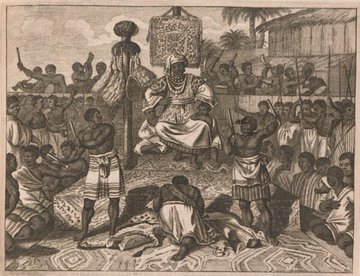

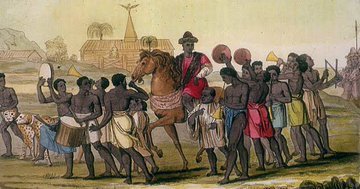
AFRICA WAS DESTROYED WHEN ARABS AND EUROPEANS FIRST STEPPED FOOT ON HER SOIL. "All of the countries named as Underdeveloped in the world are exploited by others. And underdevelopment to which the world is preoccupied is a product of capitalist, imperialist and colonial exploitation." - Walter Rodney (How Europe Underdeveloped Africa). When the Europeans came to Whydah, they found a thriving kingdom with its own institutions, political system and a network of trading relations between Dahomey and other West African kingdoms like the Benin Empire in what is modern-day Nigeria. Benin, for instance, had been trading with Dahomey since the early 17th century CE and the Ashanti kingdom in the following centuries, even before both Ashante and Dahomey became a strong polity to be reckoned with. Benin empire had before then, been trading on the West African Coast since the 11th century CE. These trade relations were shattered by first, the Portuguese, then the British and the French; with the sole intention that all African policies should no more be trading among each other but that they should all depend slavishly on Europe. To this end, Europe was most successful and the effects can still be felt today. So much so that some African countries today, imports toothpicks from Europe...and toothpick is the simplest thing, anyone can make. The Europeans were welcomed with traditional African hospitality, because according to Historian Dr John Henrik Clarke, "no one would have imagined that the welcomed guests will enslave the man of the house and the woman who cooked the meal." No one would have, indeed, imagined that. Another thing the African kings did not know was that the European trading(and later looting and plundering) corporation had an active army that was more than that of some countries. For example, the British East Indian trading corporation under Colin Mackenzie in the 1800s, that took over India(especially the kingdom of Virjayanangra in southern India) had such an army. The Dutch East Indian Company had such an army too. One of the successful transactions of such a trading corporation was when the entity became northern protectorates and southern protectorates of the British along the Niger River (which was later amalgamated by the British in 1914 CE to form Nigeria after a series of wars and manipulations), was bought by the British from the Royal Niger company for an amount of about 850 hundred pounds, some sources indicated the amount to have been in thousands of pounds. No African was part of this transaction. And in this way, it was like a 'mafia don who had taken over a territory, selling what wasn't his to another mafia don.' The British(descendants of the European barbarian tribe, the Angles-Saxons) claimed this territory as their own property, just as the French(descendants of the European barbarian tribe known as the Franks) took over Dahomey in 1894 CE. This had come at a huge price for the Africans. First, the visitors were allowed room in the coastal areas and they brought in an invisible enemy; alien diseases like gonorrhoea, syphilis, smallpox and other germs causing ailments that the Africans were not immune to. Next was slavery which was followed closely by colonialism that shattered African ancient polities to this very day. And why Europeans were busy with this 'enterprise,' Arabs were busy in the Sahel, North Africa and East Africa, placing a 'knife on everything that had held the societies together, even before there was a Europe or an Arab in existence. This knife was Mohammedanism or Islam, and it has confused the Africans to this very day. (C: THE HISTORY OF AFRICA MAGAZINE '22) #Africa
6 notes
·
View notes
Text
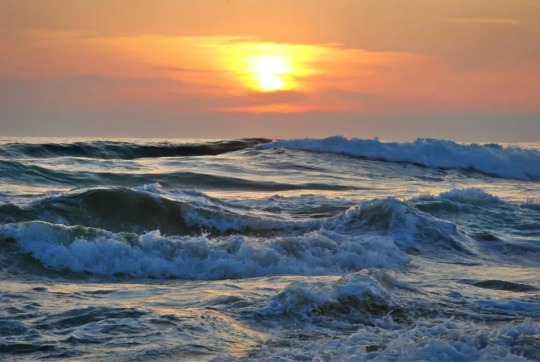
Today in Christian History
Today is Saturday, August 5th. It is the 217th day of the year in the Gregorian calendar; 148 days remain until the end of the year.
1590: Meletius Pegas becomes the Orthodox patriarch of Alexandria. He will endeavor to reunite the Greek and Coptic churches.
1604: John Eliot is baptized in England. His non-conformist views will eventually prompt him to move to America, where he will found fourteen congregations of Indian Christians, translate the Bible into Algonquin, and help prepare the Bay Psalm Book—the first book printed in America. Captured by Indians, he will learn their language while in captivity.
1720: Death in England of Anne Finch, Countess of Winchilsea, a notable poet and hymnwriter, loyal to King James II. Among her best-known religious poems is “The Atheist and the Acorn,” which depicts an atheist as a fool for trying to outguess God’s arrangements. She had also written a praise hymn beginning, “To the Almighty on his radiant throne / Let endless hallelujahs rise.”
1751: Rev. John Cuthbertson, America’s first Scottish Covenanter pastor, arrives in America. His name appears frequently as a genealogical authority because he will keep a log of births and marriages. In it, he records over five thousand family names as well as notes of six hundred marriages and almost two thousand baptisms he performs in the course of seventy thousand miles of ministerial travels.
1833: Allen B. Freeman, a young man recently graduated from a Baptist seminary, arrives to serve as a missionary in Northern Illinois, but will die of cold and exhaustion in December the following year after his horse collapses under him, forcing him to walk many miles back to Chicago.
1835: Death of Thomas McCrie, Scottish minister and church historian. He and three other divines had left the General Association Synod and formed the Constitutional Association Presbytery. He also wrote biographies of John Knox and Andrew Melville.
1844: The first assembly of Queen’s College, British Guiana, meets. The school has been established by Anglican bishop William Piercy Austin, a missionary to the South American colony.
1876: Scottish missionary Mary Slessor boards the SS Ethiopia to sail to Calabar (Nigeria). She shares the ship with a cargo of liquor.
1955: Death of Jesse Irvin Overholtzer, founder and first director of Child Evangelism Fellowship.
4 notes
·
View notes
Text

HISTORICAL IGBO TIMELINES:
STONE AGE -MIDDLE AGES.
This is the period dating 1.2million years to 3000BC , the era of homo-erectus found within the areas of ugwuele uturu following the discovery of Archeolean hand axes and stone tools in caves. Clay pots dating 3000BC were recovered at Afikpo and Opi iron slags .Details of this era is buried in archeology .
EARLY HISTORY:
8th-9 th AD : Kingdom of Nri begins with Eze Nri Ìfikuánim.
1434 AD: Portuguese explorers make contact with the Igbo.
1630 AD : The Aro-Ibibio Wars start.
1690AD: The Aro Confederacy is established
1745AD : Olaudah Equiano is born in Essaka, but later kidnapped and shipped to Barbados and sold as a slave in 1765.
1797AD : Olaudah Equiano dies in England as a freed slave.
1807 AD : The Slave Trade Act 1807 is passed (on 25 March) helping in stopping the transportation of enslaved Africans, including Igbo people, to the Americas. Atlantic slave trade exports an estimated total of 1.4 million Igbo people across the Middle Passage
1830 AD : European explorers explore the course of the Lower Niger and meet the Northern Igbo.
1835 AD: Africanus Horton is born to Igbo ex-slaves in Sierra Leone
1855 AD: William Balfour Baikie a Scottish naval physician, reaches Niger Igboland.
MODERN HISTORY:
1880–1905: Southern Nigeria is conquered by the British, including Igboland.
1885–1906: Christian missionary presence in Igboland.
1891: King Ja Ja of Opobo dies in exile, but his corpse is brought back to Nigeria for burial.
1896–1906: Around 6,000 Igbo children attend mission schools.
1901–1902: The Aro Confederacy declines after the Anglo-Aro war.
1902: The Aro-Ibibio Wars end.
1906: Igboland becomes part of Southern Nigeria (the beginning of our problem)
1914: Northern Nigeria and Southern Nigeria are amalgamated to form Nigeria. (escalation of our problem)
1929: Igbo Women's War (first Nigerian feminist movement) of 1929 in Aba.
1953: November Anti Igbo riots (killing over 50 Igbos in Kano) of 1953 in Kano
1960: October 1 Nigeria gains independence from Britain; Tafawa Balewa becomes Prime Minister, and Nnamdi Azikiwe becomes President.
1966: January 16 A coup by junior military officers takes over government and assassinated some country leaders. The Federal Military Government is formed, with General Johnson Aguiyi-Ironsi as the Head of State and Supreme Commander of the Federal Republic.
1966: July 29 A counter-coup by military officers of northern extraction, deposes the Federal Military Government; General Johnson Aguiyi-Ironsi is assassinated along with Adekunle Fajuyi, Military Governor of Western Region. General Yakubu Gowon becomes Head of State.
1967: Ethnoreligious violence between Igbo Christians, and Hausa/Fulani Muslims in Eastern and Northern Nigeria, triggers a migration of the Igbo back to the East.
1967: May 30 General Emeka Ojukwu, Military Governor of Eastern Nigeria, declares his province an independent republic called Biafra, and the Nigerian Civil War or Nigerian-Biafran War ensues.
1970: January 8 General Emeka Ojukwu flees into exile; His deputy Philip Effiong becomes acting President of Biafra.
1970: January 15 Acting President of Biafra Philip Effiong surrenders to Nigerian forces through future President of Nigeria, Olusegun Obasanjo, and Biafra is reintegrated into Nigeria.
References:
Understanding 'Things Fall Apart' by Kalu Ogbaa
Wikipedia
Image Credit: Ukpuru, Pinterest
#kalu#ogbaa#nigerian#ojukwu#emeka#biafra#fulani#hausa#igbos#igbo#nigerian history#igbo history#essaka#africanus horton#african#afrakan#kemetic dreams#africans#afrakans#brownskin#brown skin#african culture
11 notes
·
View notes